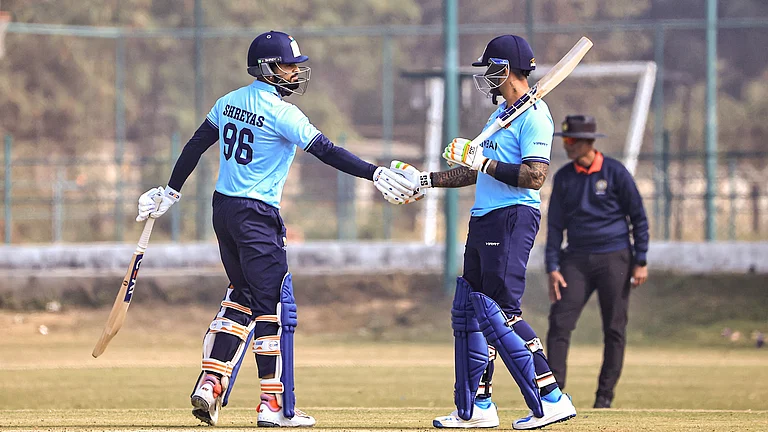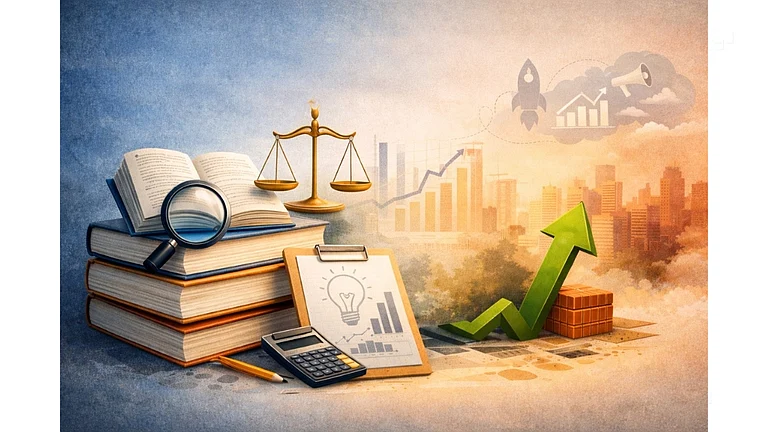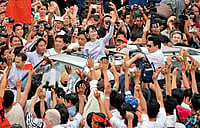Jameel is 52, and eight years away from retiring from his job in a publishing firm in Lahore. He is so enthused by the prospect of trade liberalisation with India that he has decided to stay on in Lahore, although he had planned to retire to Karachi, where he has built a house. “I think Lahore will become a trade hub. This is where all the stuff from India will come for being re-routed to the rest of Pakistan. I want to get into business after retirement. This will be the place to do business,” he pronounces confidently.
Would people not object to trading with a traditional enemy? “If our richest businessman, Mian Mansha (officially the richest man in Pakistan and the chairman of the Muslim Commercial Bank or MCB), says it is all right to trade with India, then why should the small fry object?” he counters.
Many others expect to gain from Indo-Pak trade. “Real estate developers have identified possible border posts which they think will be opened up. They have already sold land around these routes. And this happened even before the trade opening was officially announced,” says Shahid Kardar, former governor of the State Bank of Pakistan.
One such potential trade corridor (other than the Wagha-Attari route) identified for business is the Ganda Singh Wala-Hussainiwala border, which connects Kasur district of Pakistan with Firozepur in India. This was the principal trade route between India and Pakistan till the 1970s.
Trade liberalisation between the countries was possible when the Pakistan army came on board. Maj. Gen (retd) Mahmud Ali Durrani, Pakistan’s former national security advisor, feels that three primary reasons led to a change in the army’s mindset about trade with India: the deteriorating relationship with the US has removed Pakistan’s protective cover vis-a-vis India; the increasing strain on Pakistan’s economy to support a defence budget comparable with India’s; and the realisation that catching up with India’s growth would get harder if a course correction was delayed.
Durrani believes that trade liberalisation is here to stay. “The main political parties have been keen on good relations with India. The army is also on board. Even if the next election throws up Imran Khan as a player, I would be most surprised if he dumps this initiative,” he contends.
Shahid Kardar gives the lion’s share of the credit to Pakistan’s leading industrialists. “It is the business leaders who began to coax and persuade the army on trade liberalisation. Politicians alone could never have done this. The business community, led by industry heavyweights like Syed Babr Ali and Mian Mansha, used the forum of the Pakistan Business Council and met the military brass. So the army said, OK, let’s try this.”
Kardar also points out, “Don’t forget, the army is largely Punjabi, and Punjab feels very strongly about trade with India. Lahore and this province could be big beneficiaries of trade opening up.”
Kardar sees tremendous potential in the mutual advantages shared by India and Pakistan. “As China phases itself out of textiles, the business will come to this region. We could make the cloth, India could do the designing and Bangladesh or Sri Lanka could tailor. We could be latching on to your bpo industry. Pakistani companies can’t sell their software services, but if the parent company is Indian—say Infosys or TCS—which guarantees quality, everyone stands to gain.” Kardar says finding market niches is important, and that areas of trade are still to be decided. “Bureaucrats know nothing about this. Only the movement of entrepreneurs will determine that.”
Ijaz Nabi, a former World Bank economist, argues, “If Pakistan wants to play its historical geo-strategic role as a trade hub, it cannot do so without trade with India. If it revives the historic east-west and north-south trade routes, this could be a major source of growth for the next four to five decades. India has a larger role to play in making south Asia—home to much of the world’s population—a vibrant economic region.”
Most Pakistanis believe that the greatest beneficiaries of trade will be northern Indian border states like Punjab, Rajasthan, Gujarat and Kashmir.
Even while fantastic figures for potential growth in bilateral trade are being projected (in the short run, from one billion to six billion and in the long run to US $ 40 billion per year), the two governments are slow in providing a conducive environment. Trade ought to go hand in hand with tourism, a liberalised visa regime, better infrastructure and better transport links. As of now, even the agreement on a liberalised visa regime for businessmen has been postponed.
“Links via air, bus, car, or even on foot, should be explored. We should develop a system acceptable to both security apparatuses. Once we have trade and tourism, we should open up the investment regime. We should begin by allowing the opening up of offices and showrooms in both countries, followed by investment in manufacturing, services and banking. We should be looking at the next 50 years to take this opening to its logical growth potential,” says Salman Shah, who was finance minister in Musharraf’s government.
Yet, every votary of trade with India recommends caution. “Trade has to be incremental, not an opening of dams. The first few years have to be handled carefully so that neither side feels overwhelmed. The soft side of diplomacy has to be projected so that our people get to like each other,” says Salman Sheikh, former chief of the Securities and Exchange Commission of Pakistan.
With increased trade comes change, as competition begets a resetting of market dynamics. For example, some inefficient small and medium enterprises in Pakistan have closed down after the free trade agreement with China. In the initial stages, the two countries would need to be sensitive to the restructuring that might take place in industry.

Pakistani trucks at Uri sector, Kashmir. (Photograph by Jitender Gupta)
Rashid Amjad, former chief economist of Pakistan’s planning commission and V-C of the Pakistan Institute of Development Economics, recommends deliberate restraint in the initial years: “Pakistan feels more threatened because our industrial structure has not diversified into high value-added goods like electronics, chemicals and pharmaceuticals, and these sectors may need more protection for some time. Some restraint should be shown by both sides in order to avoid a backlash.”
This is why it has been decided to trade through a ‘negative list’—allowing trade in all goods except 1209 specified items, instead of a ‘positive list’, which would have named the tradable goods. “The pharma and auto industries have been put on the negative list as they felt threatened by competition from India at this stage. After a year, we will re-examine their case. But they can’t be on the negative list forever,” says S.M. Munir, president of the India-Pakistan Chambers of Commerce and Industry and vice-chairman of the Muslim Commercial Bank.
Amin Hashwani, founder president of the Pakistan-India ceos Business Forum and scion of the Hashwani Group, says, “Pakistan realises that by focussing on trade you do not necessarily dilute your position on politically contentious issues—we have the examples of China-Taiwan and China-US trade ties despite differences. Trade improves the atmosphere by changing public perceptions, creates vested interests for peace, changes the public discourse, provides space to political leaders to manoeuvre for peace and also soften the opposition. This has been realised in Pakistan.”
However, the elephant in the room, Hashwani admits, is another terror attack on the scale of 26/11. However, he hopes trade interdependencies would help reduce the credibility gap between the two governments and peoples.
Nabi says that while the Mumbai attack was a horrible event and must not be allowed to happen again, “putting everything on hold because of such people is a collective punishment and not a very good way of dealing with the problem”.
Nabi believes even such problems can be tackled through trade. “Islamic militant groups draw their strength from small business communities. When the vast majority of them start making money, they will tone down support for such groups. Once they see that neither the establishment, the political parties nor the business community is with them, they will have no role,” he argues.
“Economic inter-relationship results in a responsible way of managing conflicts,” Nabi asserts. A day may come, he predicts, when business leaders in Pakistan may ask their government to explain why it allows terror groups to operate in other countries. Amen to that.

























